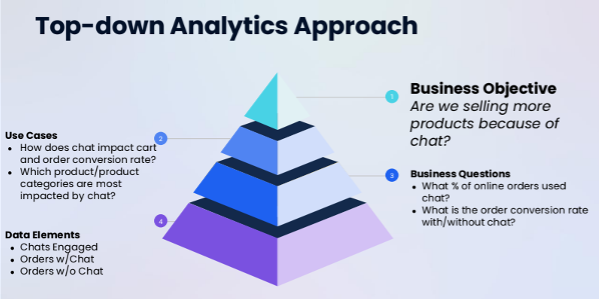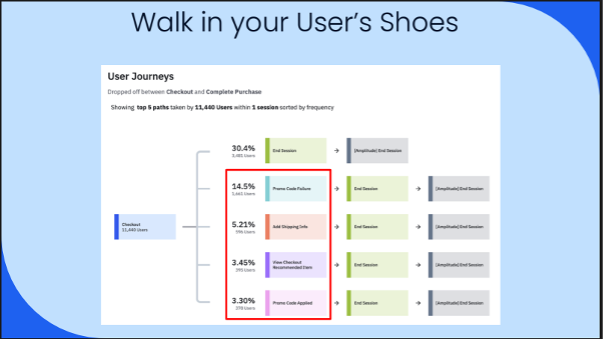
The ability to influence change through analytics is no longer a nice-to-have—it’s a non-negotiable. Yet, many organisations struggle to translate their wealth of data into actionable insights. The disconnect often lies not in the quality of the data, but in how its importance is communicated.
To master this art of data storytelling, organisations need to transform how they approach analytics. This means shifting to top-down thinking, speaking in financial terms, and becoming true advocates for their users.
Be a thermostat, not a thermometer
Too often, analytics teams simply report on what is happening—they act like thermometers. To drive change, they need to operate like thermostats, actively influencing outcomes rather than passively observing them.
It’s critical for analysts to predict trends, identify opportunities, and recommend actions. Take customer churn reporting as an example. A thermostat approach would mean analysing patterns in customer behaviour to predict potential churners, and proactively implementing retention strategies. Data analysts need to start thinking differently about how they approach analytics from the beginning to become the ultimate influencers.
Focus on top-down storytelling
Consider a common scenario: a team starts by tracking data points like engagement rates, session durations, or feature usage. While these metrics matter, focusing solely on them leads to narrow insights that fail to address broader business needs. Instead, flip the approach. Begin with critical business questions like, ‘How can this save or make us money?’ or, ‘What is important to my business right now?’.
With a top-down approach, you start by understanding key business objectives and how data helps achieve these goals. By framing analysis in terms of overarching business priorities, data analysts immediately make insights more relevant and actionable to decision-makers.

Put analysis into financial terms
A top-down approach is important as it forms a bridge of understanding between data teams and senior leaders. At the board level, revenue and profitability drive decision-making. To influence change, data analysts need to translate insights into financial terms that resonate with executives. By speaking in terms of revenue and cost savings, analysts can communicate in a language that resonates with decision-makers.
Here’s an example. Instead of reporting that a new feature increased user engagement by 15%, translate this into financial impact: “The new feature increased user engagement by 15%, which we project will lead to a £500,000 increase in annual recurring revenue based on historical conversion rates.” This approach makes the value of insights clear and compelling.
Empathise with, and advocate for, users
Data isn’t just about numbers, it’s about people. By using analytics to understand and empathise with users, analysts can become their advocates within organisations. This begins with understanding the complete user experience and using data to tell the story of their experiences, frustrations, and needs.
For instance, analytics might reveal that users are abandoning their shopping carts at a high rate during the checkout process. Instead of just reporting this statistic, dig deeper. Analyse user behaviour patterns, conduct surveys, and use this data to understand the user experience. By presenting this narrative, backed by data, analysts aren’t just reporting a problem—they’re providing a clear direction for improvement.

Don't ignore corporate politics
Finally, remember that influencing change is all about navigating the complexities within organisations. Build relationships with key stakeholders. Understand their priorities and pain points. Tailor data stories to address their concerns and objectives. And sometimes, if data teams are still struggling to gain traction, they shouldn’t be afraid to bring in outside expertise to lend credibility to their insights.
In an era of digital transformation, the ability to influence change through data analytics and storytelling is a critical skill. Technical skills are no longer enough to succeed, and this sentiment can be felt in the employment market, where human skills are currently in demand twice as much as digital skills. By focusing on top-down analysis, translating insights into financial terms, advocating for users, honing narrative skills, and navigating corporate politics, data teams can enhance human skills, and transform numbers into a powerful catalyst for organisational change.

Adam Greco
As a Product Evangelist at Amplitude, Adam Greco helps prospects and customers understand how Amplitude helps build better products. He does this through workshops, blogs, videos and other content. Adam has written over 200 blog posts related to Adobe Analytics and authored the definitive book on Adobe Analytics.


